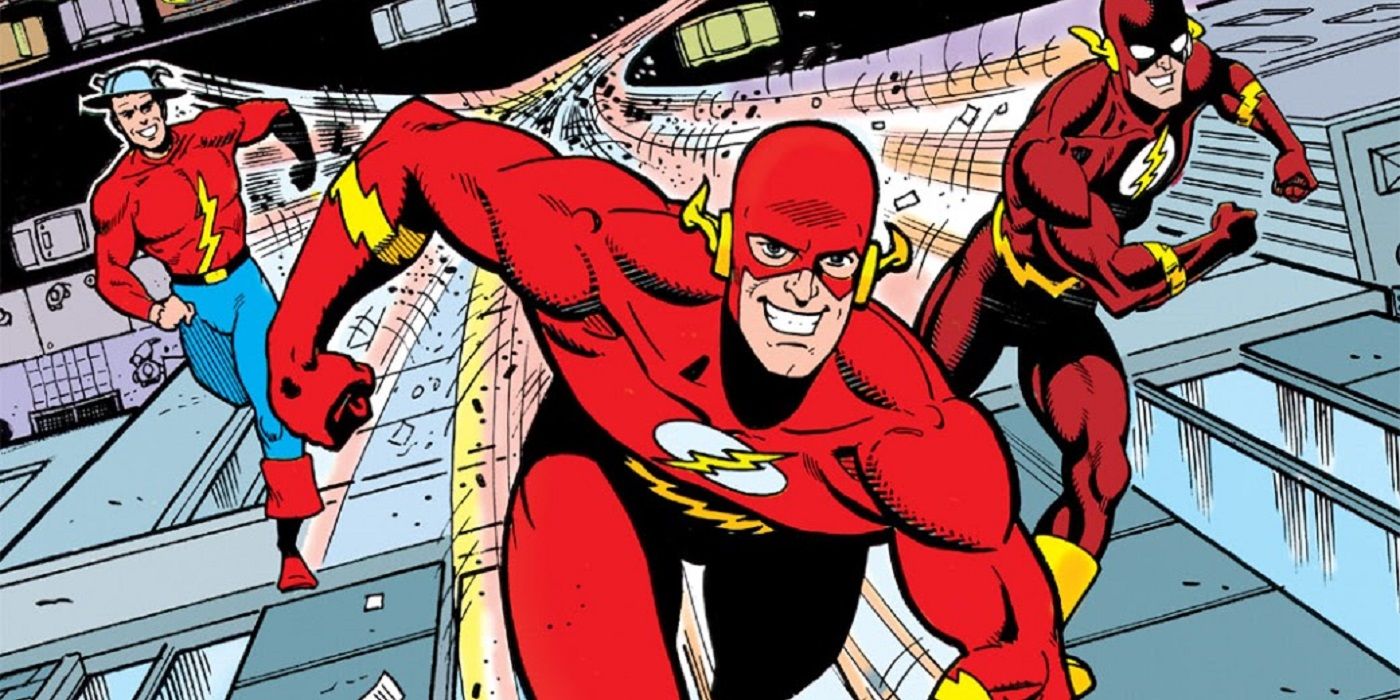
The release of DC's Flash Facts graphic novel, which is curated by Mayim Bialik and filled with fascinating lessons in S.T.E.M. starring DC superheroes, brings to mind the origin of the term "Flash Facts." How long has it been in use and what kind of connection is there between classic "Flash Facts" and DC's graphic novel?
As it turns out, "Flash Facts" have not only been around for well over sixty years, but their origins are buried in the very first comic book featuring the Flash over eighty years ago!
It is important to note that the earliest comic books all appeared in oversized anthology formats. You see, when comic books first started out, they were collections of already published comic strips from newspapers. Obviously, no one newspaper strip had enough content to maintain a full ongoing comic book on its own, so instead, each comic book was filled with many different comic strips.
Over time, when comic book companies realized that they could do original content of their own (a bold idea at the time), the companies continued that format. Eventually, companies started to do themed anthologies. 1936's Detective Comics, for instance, had mostly detective-themed stories. 1938's Action Comics, though, changed the game. The idea of that series was to collect a number of adventure-themed stories, but the lead feature was instead a superhero named Superman. Superman became such a sensation that he soon inspired multiple comic book companies to put out their own anthologies filled with other superheroes.
One of these comics was 1939's Flash Comics #1 by All-American Comics, a comic book company formed by Charles Gaines, which was co-owned by Jack Liebowitz, who owned National Comics, the company that published Superman. All-American Comics initially was treated as being part of the same company as National, which eventually changed its name to DC.
Flash Comics featured the debut of the first speedster known as the Flash, as well as the flying hero known as Hawkman. One of the issues with anthologies is that there were so many pages to fill each month, so comic book companies would have so-called "filler" pages, like a puzzle or something similar. Flash Comics #1 included a recurring feature called "Flash Stamps," about collecting stamps.
Comic book companies were very aware about making sure parents felt that comic books were not trashy, so the publishers at National and All-American Comics would make a point to highlight as much educational material as they could (while they also had a lot of stamp collecting ads to work in there, too, of course). You might wonder why a Flash-themed feature had nothing to do with speed, but the problem was that Flash was only one of many different heroes in Flash Comics, so the editors kept it generic.
Soon, though, Flash was popular enough that he joined Batman and Superman in having his own quarterly comic book called All-Flash. Now that the Flash had his own series, the filler bits were Flash-centric, and so the Flash would begin to teach readers about various speed records. In the second issue, Flash would also begin to give lessons about how to keep in shape to run as fast as possible.

Over time, superhero comic books began to lose their luster and Flash lost his solo series in 1947, with Flash Comics folding a year later. In the meantime, two major events took place. One, Gaines hired a young editor named Julius Schwartz who had previously worked as a science fiction writer's agent. Second, after briefly going out on his own, Gaines decided to just sell All-American Comics to National Comics. Schwartz, then, continued to work for National even after Gaines left to form his own comic book company, Educational Comics. Gaines tragically passed away soon after forming the company, and so his son, William Gaines, kept the company alive by transitioning away from educational comics and more towards horror, crime and humor, with the company becoming better known as EC Comics.
Schwartz was fascinated in science and so, in 1948's Flash Comics #98, Schwartz debuted "Flash Facts" as a recurring feature that detailed scientific facts. Again, Flash Comics was still an anthology (with Hawkman actually becoming a more prominent feature in the series once Flash lost his solo series), so the first "Flash Facts" really didn't have anything to do with speed...
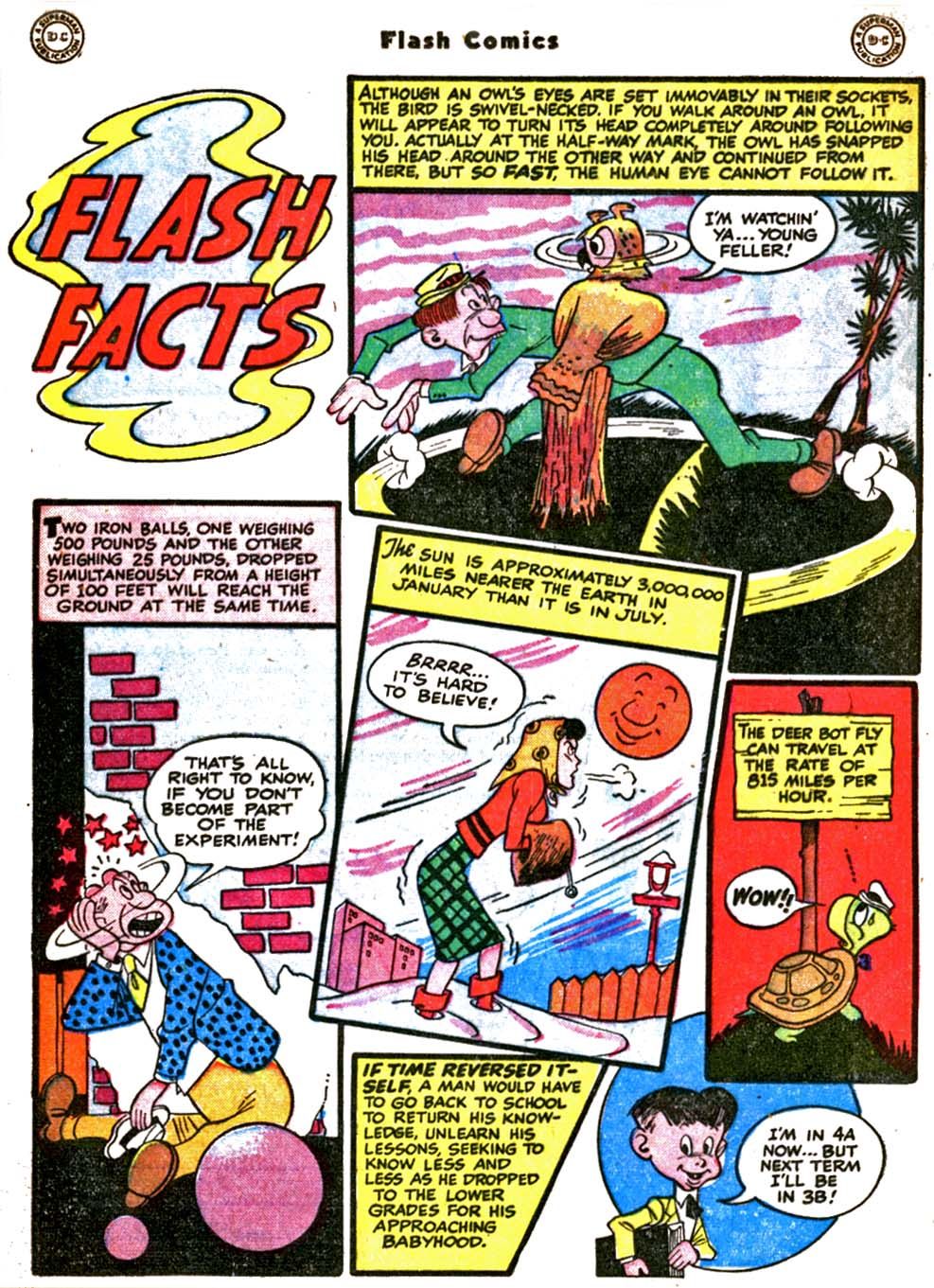
However, there were two other "Flash Facts" in the issue and the other two did involve speed facts. As DC cut back on their superhero comics, Schwartz edited a number of other comics, and they all included a filler page about scientific facts.
Eight years later, Schwartz revived the Flash concept in the pages of National Comics' try-out series, Showcase. In that first issue (Showcase #4), it included both a "Wonders of Speed" and a "Fastest Creatures on Earth!" filler page. When this new Barry Allen Flash proved popular enough to get another spotlight issue, Showcase #8, that issue featured a "Wonders of Speed!" filler page.
That issue also featured the first of what would prove to become a regular feature in Silver Age Flash comics. Writer John Broome and artists Carmine Infantino and Frank Giacoia introduced a villain named Captain Cold, whose powers were derived from studying a cyclotron. Schwartz even included an editor's note giving more detail about cyclotrons. For the next decade, Flash comics would almost always add some sort of science-based aspect to the stories and Schwartz would use his editor's notes to give further details to the readers.
Showcase #13 was the Flash's last spotlight issue before he received his own ongoing series. That issue had a filler page with facts about lighting called "Flash of Lightning" and, for the first time, a "Flash Facts" page (reprinted from Flash Comics #99). Flash then received his own ongoing series in 1959 (picking up the numbering of the old Flash Comics series with #105, as back then, comic book companies thought readers were more interested in longer-running comics, as a comic must be good to last that long, right?) and the first issue had a "Flash Facts" page in it...
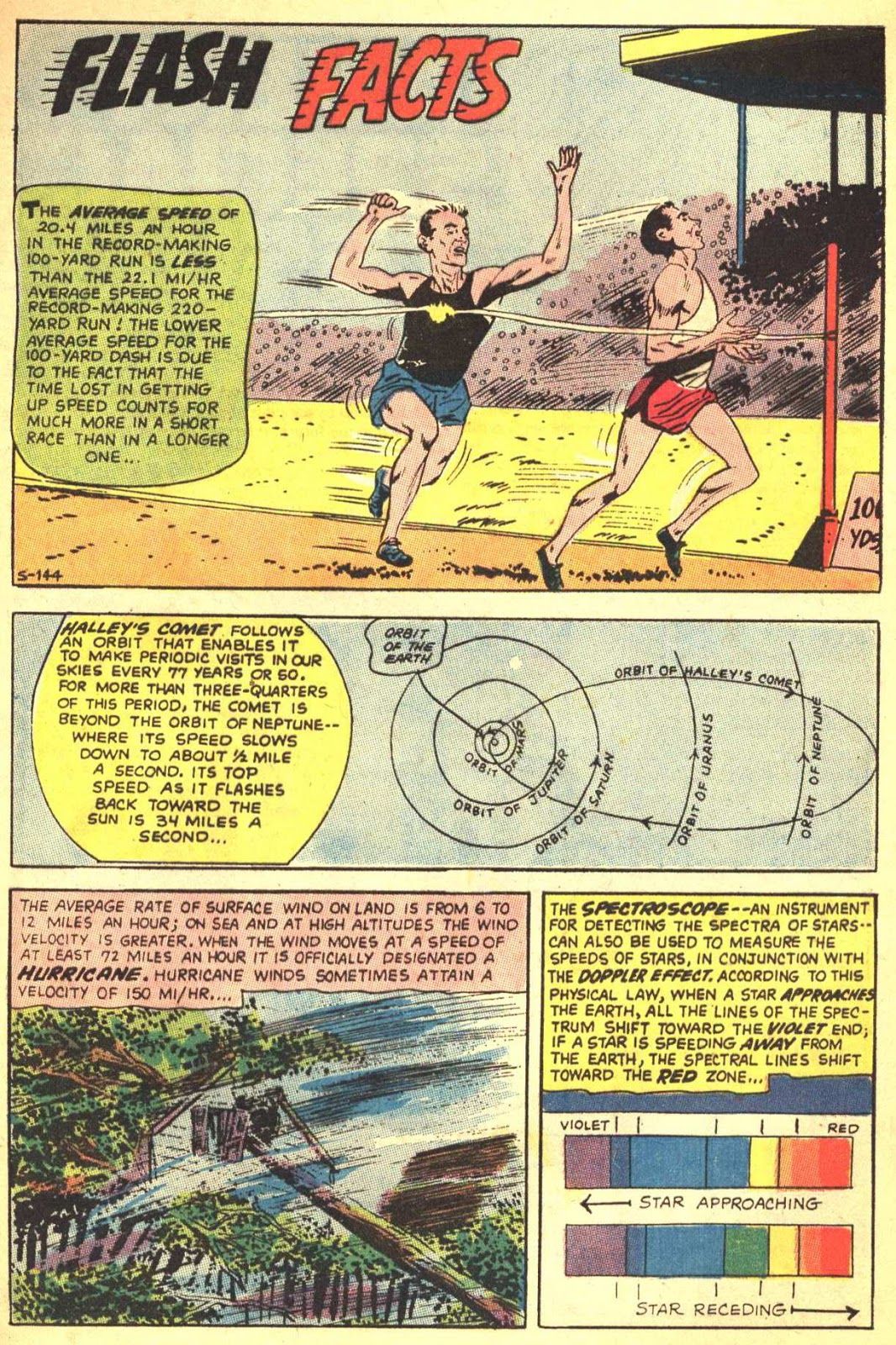
In the letter column to 1961's Flash Comics #124, Schwartz noted, "Many of our readers have complimented us for our realistic approach to The Flash. When we present an amazing, almost unbelievable idea or gimmick, we like to explain it scientifically.” And so Flash Facts continued as a regular feature in Flash throughout the 1960s. Over time, though, filler features like these ceased to appear in comic books.
Barry Allen was killed off in 1985's Crisis on Infinite Earths #8 and was succeeded by Wally West, his former sidekick, Kid Flash. In 1997's JLA #3 by Grant Morrison, Howard Porter and John Dell, Wally fights a villain, when he recalls that Barry used to teach him facts about science; in Wally's recollection, Barry termed them "Flash Facts" and Wally used one of these "Flash Facts" to defeat his opponent...
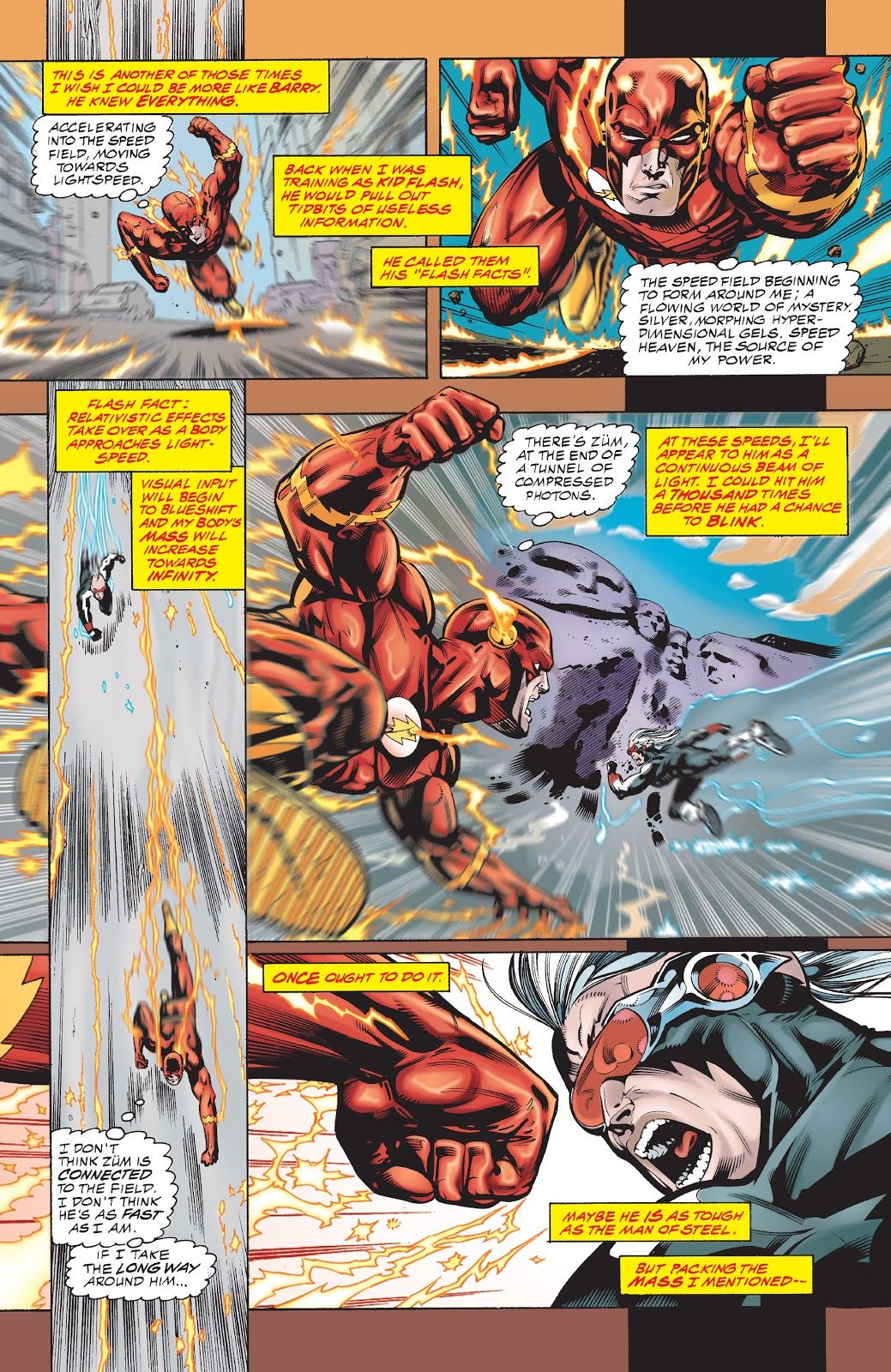
Since then, Wally and Barry have made occasional references to "Flash Facts" in the comics. During Blackest Night, even Hal Jordan got in on the "Flash Fact" action. It has become a long-established part of DC history now and it is fun to see a new generation get their first exposure to "Flash Facts." See below for a couple vintage Flash Facts inserts.

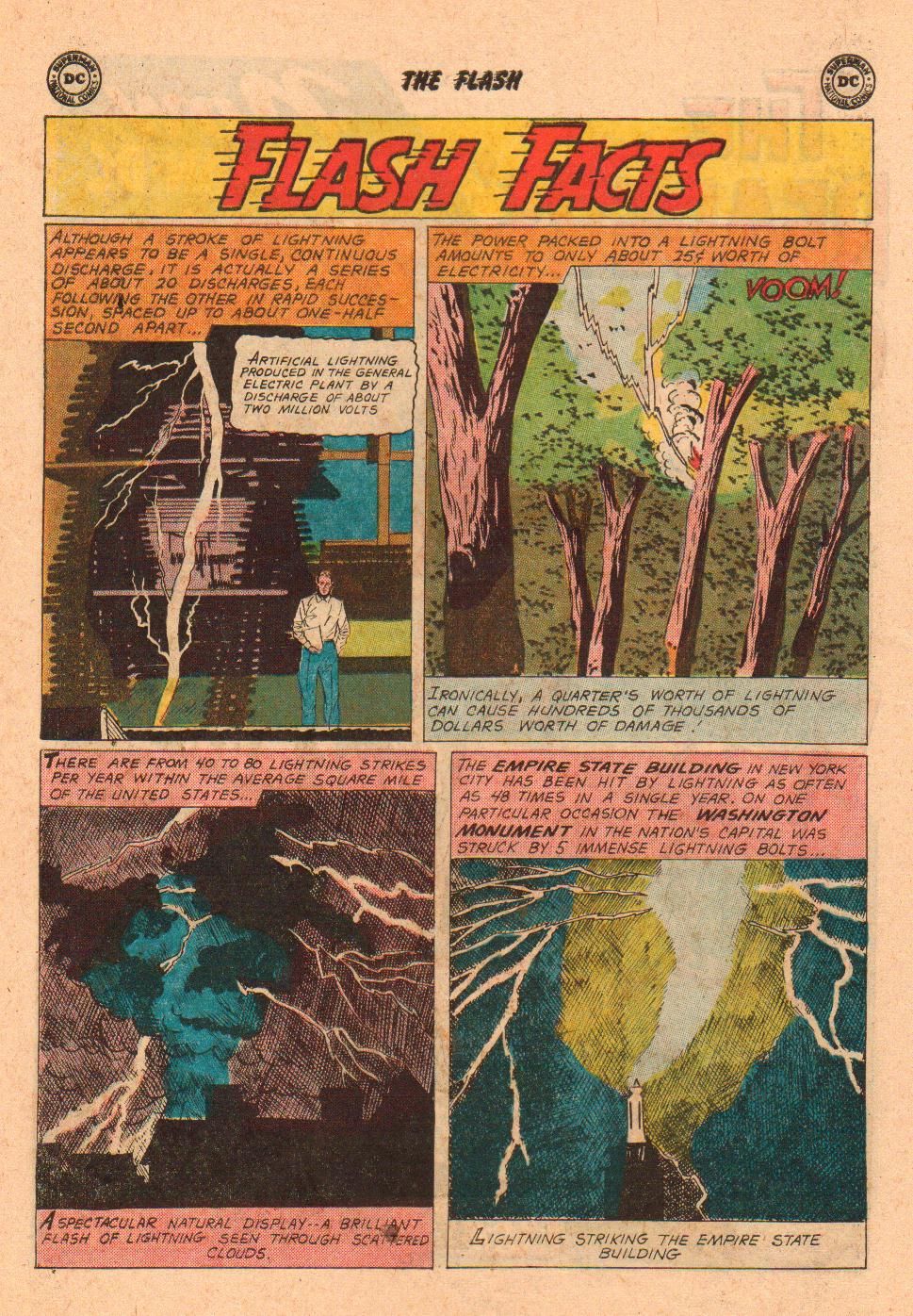
0 Comments